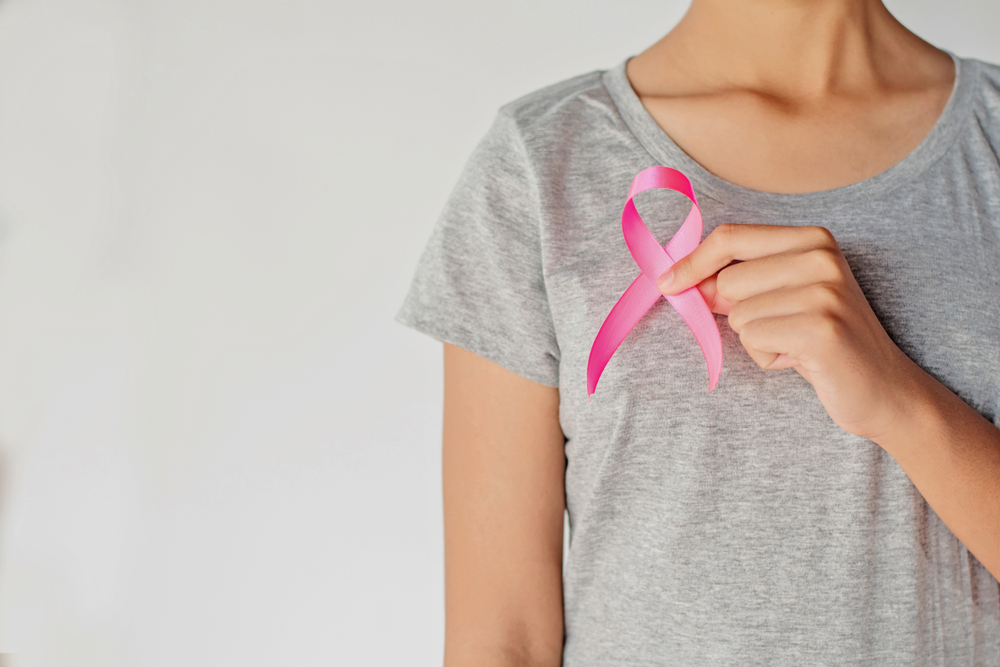Breast Cancer Images on Ultrasound – To be fair, I don’t think any of these techniques alone will guarantee a high score. I’m not going to lie; there are a lot of people who use these techniques and still don’t pass. I know a few people who failed the test three times before passing. But I do believe they all add up to something very valuable.
I know a few people who passed the test four times, including one guy who was a straight-A student in college and had never taken an exam before.
So what am I saying? I don’t think any of these methods are guaranteed to get you a perfect score. But if you’re willing to put in the time and effort, they’re worth trying.
And let’s face it, it’s not like you’re just playing around. This is your future we’re talking about here. So you’ll want to do everything you can to increase your odds of success.
As you know, the GRE is a pretty big deal. It’s one of the most important tests you can take for your grad school application. So it’s really important to study.
And if you’re not confident you can do well, it’s worth asking for help from a test prep company.
You can do many things to increase your chances of success on this exam, but one of the most important things is going over past questions.
This is because past questions are often similar to ones you might see on the exam; therefore, you can use those questions to help you prepare.
If you are studying for the GRE, you have probably heard the saying, “Practice makes perfect”. This is true. You must practice the material you have been studying to become familiar with the format and structure of the test.
The key to scoring higher on the GRE is being able to answer questions quickly and accurately.
When studying for the exam, you must review each section, practice every question, and check your answers before moving on.
Doctors use ultrasounds to view the internal structure of the human body. However, many people don’t realize they can also be used for breast cancer diagnosis. Ultrasound images are very detailed and can show abnormalities that other imaging tests may miss.
Breast ultrasound scans are performed during a routine physical exam to check for breast cancer. While they are often served as a diagnostic test for breast cancer, they can also be useful for follow-up exams.
This article will look at the different types of breast ultrasound scans available and their uses.

Ultrasound images of breast cancer
There is no denying that breast cancer is one of the most common forms of cancer. According to the American Cancer Society, breast cancer accounts for nearly 1 in 4 women diagnosed with cancer in the United States.
It’s estimated that nearly 252,000 new breast cancer cases are diagnosed each year. That makes it the second-leading cause of cancer death among women.
But what is breast cancer? And how do we detect it? In this article, I’ll give you a brief overview of breast cancer and how ultrasound imaging can help see it.
Ultrasound imaging of the breast is an effective way to detect breast cancer and other abnormalities. These images are obtained by placing a handheld ultrasound transducer over the breast.
The ultrasound transducer emits sound waves that reflect off objects within the body. The echoes are then converted into an image of the tissues under the transducer.
Breast ultrasound is used in conjunction with mammography. Mammography involves x-ray pictures of the breasts and can sometimes miss small cancers. Ultrasound can identify those cancers missed by mammography and help determine whether the cancer has spread.
Breast cancer symptoms
Many types of medical imaging techniques can be used to diagnose breast cancer. These include mammography, ultrasound, MRI, and other methods.
Some of these methods are invasive, while others are non-invasive. Non-invasive techniques include physical exams and self-exams.
However, there is one non-invasive method that is not only effective but also very inexpensive. That is the ultrasound technique.
Breast ultrasound is a diagnostic tool that uses sound waves to create an image of the breast’s internal structures.
The purpose of this technique is to detect tumors that the naked eye cannot see.
It is an excellent method for detecting cancer in its earliest stages since the tumor cells are easier to see at this stage than later.
Ultrasounds can also be used to assess the size and shape of a tumor, as well as its density.
The final benefit of using breast ultrasounds is that they are a painless and low-risk procedure.
Ultrasounds are a great way to diagnose many types of breast disease. They’re also an important part of a woman’s regular medical check-up.
However, it’s important to understand that ultrasounds can be misleading. When used alone, they won’t necessarily tell you everything you need to know about your health.
This is where mammograms come into play. A mammogram is a simple, non-invasive test that lets doctors see if a lump has formed in the breast. In many cases, a mammogram will give doctors a clearer idea of whether or not a lump is cancerous.
It can also spot other breast diseases, such as cysts.
How to get a mammogram
Ultrasound images of breast cancer are a common method to diagnose breast cancer. It uses sound waves to create images of the tissue inside the body.
As discussed in the first article, ultrasound images are often used to help determine whether a lump is cancerous. If you are concerned about a lump in your breast, ultrasound images are a great way to tell.
The downside to ultrasound images is that they can sometimes be difficult to interpret.
Ultrasound Images Of Breast Cancer
There is no doubt about it. Ultrasounds are an invaluable tool for diagnosing various medical conditions. Many doctors say that ultrasound images can help save lives. This article will explore the benefits of ultrasounds for diagnosing breast cancer.
One of the most common symptoms of breast cancer is a lump. It may not be easy to know when you first notice a bubble. This article will outline a few key ways you can use ultrasound imaging to diagnose breast cancer.
Ultrasound imaging is a great technique for diagnosing many diseases. Ultrasound images of breast cancer are a great way to detect and diagnose breast cancer in its early stages.
I highly recommend this method to anyone experiencing symptoms or wanting to be on the safe side.
Mammograms and other tests
Ultrasound has been around for over 50 years. It was originally used to look at internal organs but has since been adopted to look at breast cancer.
Breast ultrasound is a common test done on women with breast cancer screening. This is a very simple and non-invasive test that uses ultrasound to look at the breast tissue and determine whether there are any changes in the tissue.
There are three main types of ultrasound used to image breast tissue. The first type is the standard ultrasound, which uses sound waves to examine breast tissue. The second type is the high-frequency (or HF) ultrasound, which uses a higher frequency of sound to see things more clearly. Finally, the contrast-enhanced ultrasound uses a dye injected into the bloodstream.
It’s important to note that ultrasound images are different than mammograms. Mammography uses X-rays to look at breast tissue, while ultrasound uses sound waves. While ultrasound images are similar to a traditional X-ray, they are much more detailed and less invasive.
Ultrasounds have been around for a very long time. They were first used in the 1950s for internal organ imaging. Then in the 1980s, they were used for pregnancy scans. Today, they are still used for internal organ imaging, but they have become a common tool for detecting and diagnosing various diseases.
The way ultrasounds work is by shooting sound waves into the body. When the sound waves hit an object (like a tumor), the echo of that wave bounces back to the scanner.
It is these bouncing echoes that create the image.

Frequently Asked Questions (FAQs)
Q: What should women know about breast cancer?
A: As we grow older, our breasts are going to change, but if they don’t feel right or they hurt, you should see your doctor. It would help if you also talked to your doctor about any changes you may notice in your breast.
Q: How common is breast cancer?
A: One out of every eight women gets breast cancer. There are a lot of things you can do to help keep your breast cancer risk low.
Q: What can women do to lower their risk of breast cancer?
A: Keep track of your menstrual cycle. If you’re a woman over 30 years old, you may need to start tracking your bike again. Women with breast cancer are twice as likely to have a first-degree relative who has had it. For women at high risk of breast cancer, regular screening is recommended.
Q: How would you describe the breast cancer ultrasound as a patient?
A: When I had my ultrasound, I was a bit nervous about it, but it was nice because I had the opportunity to look at my results with a radiologist.
Q: Can you tell me how you learned about breast cancer?
A: I first learned about breast cancer when I was about 12 years old. My mom told me that she had breast cancer and a mastectomy. That was the first time I heard about the disease.
Q: How did you learn about the treatment options for breast cancer?
A: After learning about the disease, my mom got scared because she didn’t know what to do, so she took me to the doctor. He told us that different treatments were available, like chemotherapy and surgery.
Myths About Breast Cancer
A breast lump will always turn out to be breast cancer.
Ultrasounds of breasts will not show anything abnormal unless there are lumps.
The breast is not affected by thyroid hormones.
Breast tissue is not affected by thyroid hormones.
A breast lump not seen on a physical exam but found on ultrasound is not cancer.
Breast ultrasound cannot detect a mass.
Breast ultrasound is not reliable for detecting breast cancer.
Mammography is the most effective way to diagnose breast cancer.
An ultrasound image of breast cancer looks like a grape because that’s what it feels like.
Conclusion
Here are ten tips I have used to get higher scores on the test. While there are more, I chose these to highlight the most common problems.
Take the test early. By that, I mean take the test as soon as you can after registering. This helps you get a feel for the material and gives you a chance to study without rushing.
Do practice tests. Nothing is more frustrating than not knowing where you stand on the test. By practicing, you can easily identify your strengths and weaknesses.
Read the questions. This seems obvious, but many people skip this step. Even though the questions may look easy, they are written to trick you into guessing. Reading the questions will help you identify your weaknesses and what areas you should focus on.
Write down your answers. Many students leave the test with blank paper and a pen. This can cause them to make careless mistakes or not answer questions because they are confused. Writing down your answers will help you stay organized and avoid careless errors.
I think it’s safe to say that the GRE is probably one of the most stressful exams you’ll ever face. But just because it’s stressful doesn’t mean you can’t score high.
To help you on your way to success, I created this step-by-step guide to help you improve your scores.
 Fit Netion My WordPress Blog
Fit Netion My WordPress Blog



